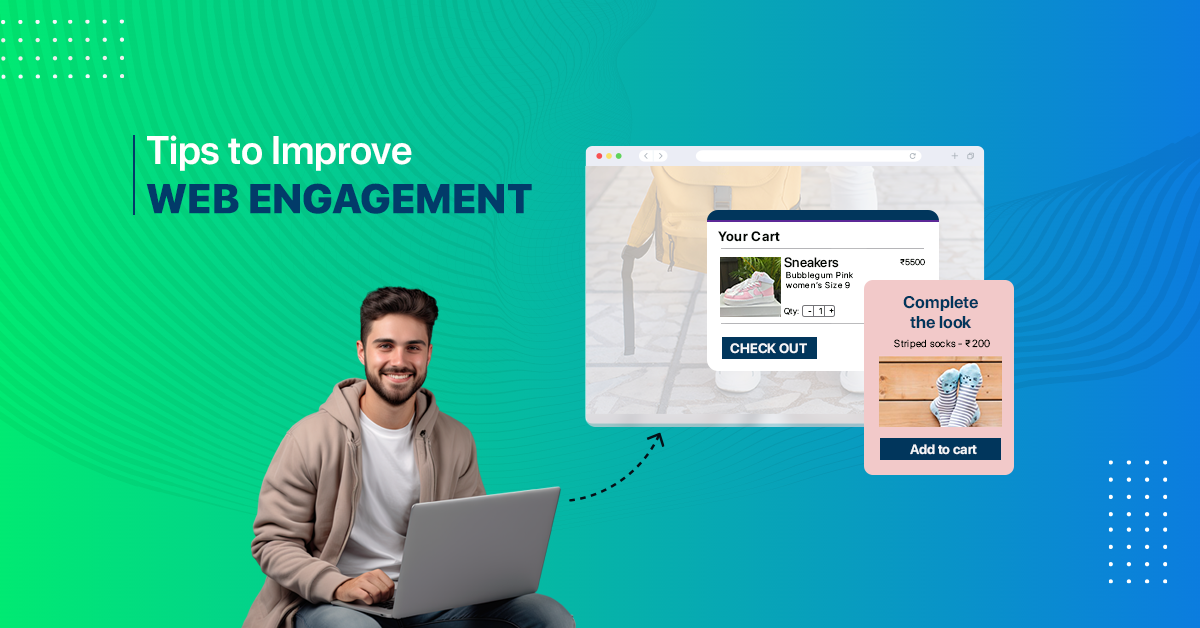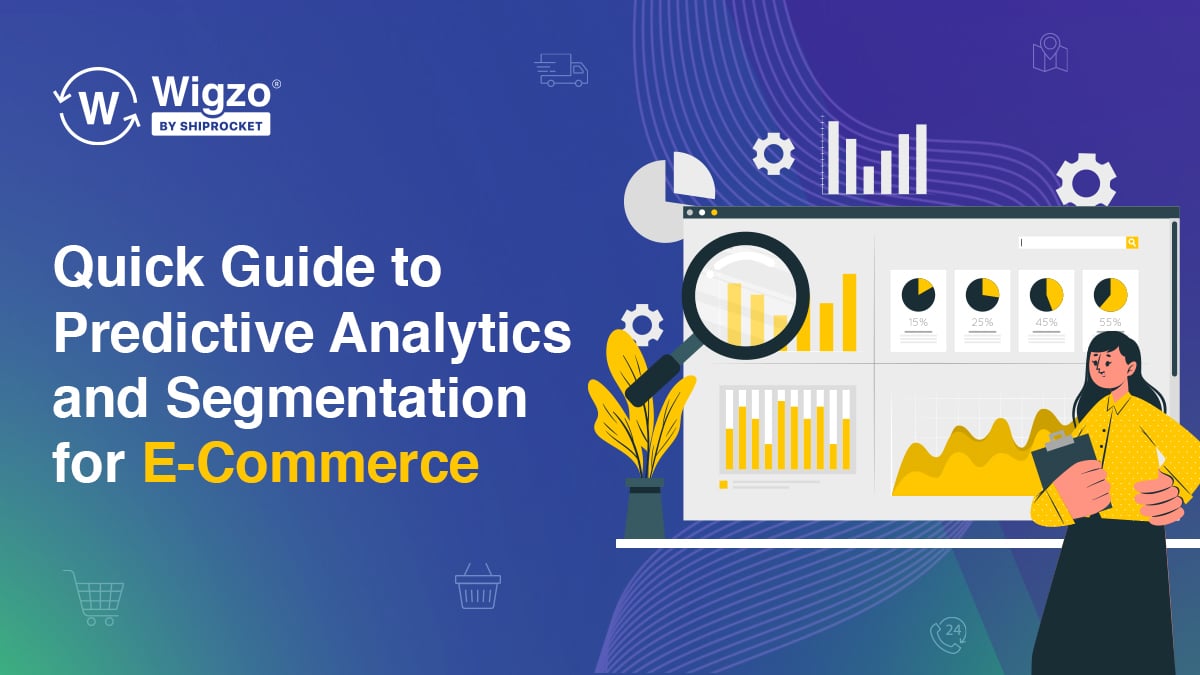In the bustling world of e-commerce, web engagement is the lifeline connecting brands to consumers. Think of it as the digital equivalent of a shopkeeper catching the eye of a passerby and drawing them into a lively market stall. For e-commerce brands, heightened web engagement means more time spent on your platform, and, crucially, more conversions.
Dive in as we unravel four dynamic strategies to captivate your online audience, making their digital shopping journey efficient and delightful.
Whether you’re a seasoned e-commerce pro or a budding online entrepreneur, these strategies promise to transform how your customers interact with your brand.
#1. Optimize Your E-Commerce Site’s UX/UI and Navigation
A quick trip down memory lane reminds us of the agonizing wait for websites to load during the dial-up internet era. However, a mere second delay can cost e-commerce brands dearly as we blaze through the digital age. The importance of quick load times must be crystal clear.
Imagine this: a customer finds your site, eagerly clicks on it, and then… waits. And waits. Every extra second that ticks by increases the likelihood they’ll bounce right off, never to return. According to a study by Google, 53% of mobile users abandon a site if it takes more than three seconds to load. Yes, the bar is set that high! Users now anticipate e-commerce platforms to be snappy and seamless.
Tips to Enhance Your Loading Time
These are some actionable steps you can take to optimize your site’s speed.
- Minimize Large Image Files: Pictures speak a thousand words, but they shouldn’t slow down your site. Compress images without compromising quality. Tools like TinyPNG can be lifesavers here.
- Optimize UI/UX: A clean CSS and HTML code can do wonders for your user experience and site-loading time. Consider optimizing your website’s design and navigation elements from a UI perspective to increase conversions and reduce drop-offs.
- Use Content Delivery Networks (CDNs): CDNs store cached versions of your site in multiple locations globally, ensuring that users get content from the nearest server. This reduces the time taken to fetch data, leading to quicker load times. Cloudflare and Akamai are popular options.
- Optimize Scripts and Code: Trim the fat! Reduce unnecessary code, combine multiple scripts, and utilize asynchronous loading for JavaScript files. Every byte saved means a faster, more responsive site.
E-commerce players, remember: in the race to capture online shoppers, speed is your secret weapon. Don’t be left in the dust.
Focus on Mobile Optimization
Mobile optimization is crucial for a consistent user experience across your major touchpoints. If e-commerce were a city, mobile commerce would be its bustling downtown district. An astounding statistic from Statista reveals that in 2021 alone, over 50% of all e-commerce sales occurred via mobile devices. This number is close to 60% as of 2023. In other words, smartphones and tablets have evolved from mere communication tools to indispensable shopping companions.
To cater to this massive mobile movement, e-commerce brands must embrace a mobile-first design mindset.
- Responsive Design Principles: Ensure your website looks and feels great on all devices. With responsive design, your site dynamically adjusts to the screen size, whether it’s a smartphone, tablet, or desktop. Platforms like Bootstrap offer frameworks to kickstart this process.
- Simplified Navigation: On mobile, screen real estate is precious. Opt for clean, clutter-free navigation. Dropdown menus, large touch targets, and a straightforward path to the checkout can make a user’s journey smooth and enjoyable.
In the age of fingertip shopping, optimizing for mobile isn’t just a suggestion—it’s a mandate for e-commerce success.
Use Consistent and Predictable UI/UX Design
In the realm of design, especially in the e-commerce world, consistency isn’t just about aesthetics—it’s a trust-building mechanism. A predictable and consistent design serves as a comfortable digital environment, guiding users effortlessly through their shopping journey.
We’ve all been there—landing on a website and instantly knowing where to find the cart, search bar, or login button. This intuitive navigation isn’t accidental; it’s due to familiar web conventions and patterns. According to NNGroup’s findings, deviations from web conventions often lead to usability disasters. Sticking to recognized patterns ensures users don’t have to relearn navigation each time they visit a different website.
Best Practices for Consistent Digital E-Commerce UI/UX;
- Brand Colors, Fonts, and Layout: Your brand’s visual identity should echo consistently across your e-commerce site. If your brand color is a specific shade of blue, that hue should dominate, from headers to hyperlinks. Similarly, typography plays a pivotal role. Choose a readable font and maintain it throughout, ensuring legibility and brand recall.
- Uniform CTAs and Icons: Whether it’s a ‘Buy Now’ button or a ‘Search’ icon, maintaining consistency is key. This means identical color schemes, shapes, and positions across pages. When users recognize a pattern, their actions become more decisive—boosting conversions.
A well-crafted, consistent design doesn’t scream for attention. Instead, it provides a reassuring backdrop, letting your products shine and making user interactions instinctive and enjoyable.
#2. Make the Most of Festive Season Sales
Festive season, anywhere in the world, is a fabulous time to bring in more customers to the e-commerce site and boost engagement for conversions. Across the globe, e-tail businesses offer many deals, discounts, and special perks to the buyers during major festivals. See how you can leverage this to your advantage.
Boost Your Festive Season Sales
- Offer Personalized Deals: Festive season offers a great opportunity for e-commerce brands to improve sales conversions and average cart value. Personalized offers to site visitors can bring in a revenue spike for your brand during this period. E.g., during the Diwali season, you can promote products based on the customer’s last year’s purchase – like clothes, gift packs, etc.
- Leverage Visual Ethics: Your brand and products on the website showcase must embrace the festive spirit and make the customers feel welcome and valued. Think festive banners on the site like ‘Merry Christmas’ or ‘Happy Rakhi’ and so on. This adds a personal touch for the visitors who are excited about the festival.
- Exclusive Festive Discounts: Most e-commerce brands are recognized for their exclusive festive offers and discount deals. You too can create a raving customer following through unique festive deals. A great example of this is Amazon’s Great Indian Festival sale. They open the sale during Diwali season and witness massive purchases during that period. Another example is ‘Black Friday’ sales by e-tailers in the USA. Use your imagination and make the most of it!
#3. Personalization and Recommendations
Online shopping can sometimes feel like wandering through an endless digital aisle, devoid of a human touch. But imagine walking into a store where the shopkeeper remembers your name, knows your style, and curates products just for you. This is the magic of personalization in e-commerce. Tailored experiences resonate deeply with consumers. According to Epsilon research, 80% of customers are more likely to make a purchase when brands offer personalized experiences. The benefits? A dramatic spike in conversion rates and a solid foundation for building brand loyalty.
Offer Tailored Shopping Experiences
- AI-Driven Product Recommendations: Ever wondered how platforms like Amazon seem to know just what you’re looking for? The answer lies in advanced AI algorithms. These systems analyze users’ behaviors, preferences, and past purchases to recommend products they’re likely to love.
- Targeted Promotions Based on Browsing History: We’ve all been tempted by those timely discount emails. By analyzing a user’s browsing history and wishlist items, e-commerce platforms can deliver targeted promotions that feel less like generic ads and more like personalized perks.
- On-Site Notifications: Onsite notifications are a great way to engage inbound customers. Personalized notifications can be triggered based on the user’s behavior to amplify conversions. E.g., brands can trigger cross-sell items like socks if a customer is browsing shoes or has added them to the cart. Customer data and marketing automation platforms like Wigzo can help you deploy such functionality fast!
- Use Exit Intent: Exit intent hooks customers who want to fly away from your website. Usually, exit intent pop-ups are triggered when the site detects a customer’s intention to close the tab or switch to another window. Limited time discounted and exclusive deals work well for conversions in this case.
- Up-sell/Cross-sell at checkout: This is a time-tested strategy to increase the AOV (Average Order Value) at the checkout. By recommending the right up-sell/cross-sell products, brands can maximize their transactional value with every checkout. Think selling phone-covers and earphones with a newly purchased phone!
In an era where consumers are bombarded with generic advertising and endless product options, personalization stands as a beacon, guiding shoppers to products that truly resonate with their needs and desires.
#4. Loyalty Programs and Incentives
In the dynamic landscape of e-commerce, gaining a customer’s attention is just half the battle; retaining it is the real challenge. Enter the realm of marketing automation. By automating outreach efforts based on user behavior, brands can serve timely reminders, offers, and updates.
This not only entices customers back to the platform but nurtures an ongoing relationship. Have you considered leveraging a platform like Wigzo to accomplish this easily? With its intuitive suite of automation tools, it promises to redefine customer re-engagement. And here’s the best part—you can book a FREE demo and witness its magic firsthand.
Leverage Rewarding Loyalty Strategies
- Tiered Programs: Much like a game, introduce levels in your loyalty program. The more customers shop, the higher they climb, unlocking exclusive perks.
- Point-Based Systems: Offer points for every purchase, which can later be redeemed for discounts or gifts. This simple yet effective system keeps customers coming back for more.
- Offer Exclusive Access: Grant loyalty members early access to sales or new product launches. This VIP treatment can amplify their attachment to your brand.
Your turn to supercharge web engagement!
Try out the above strategies and watch your e-commerce customer engagement go up! For incredibly powerful personalization, conversions, and repeat purchases – you can count on Wigzo by your side.
Happy selling 🙂













